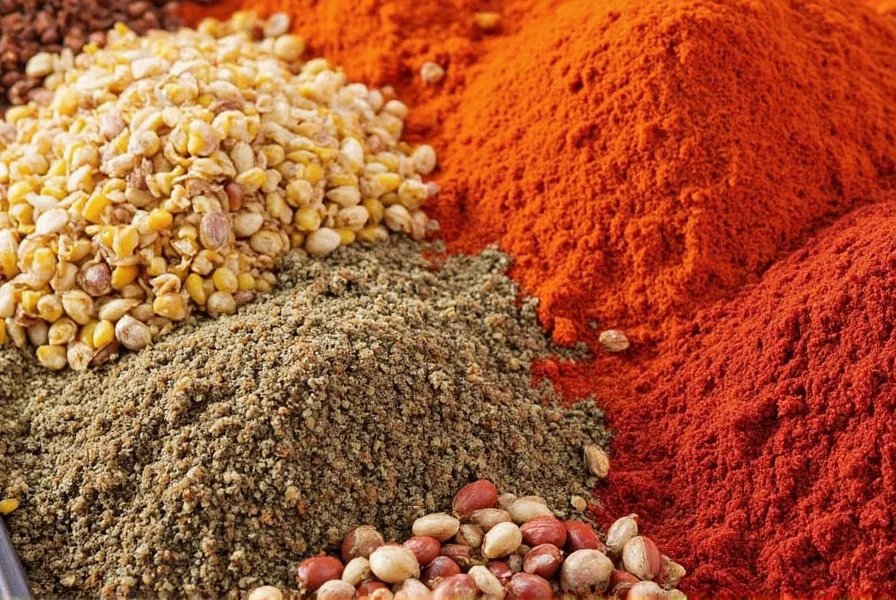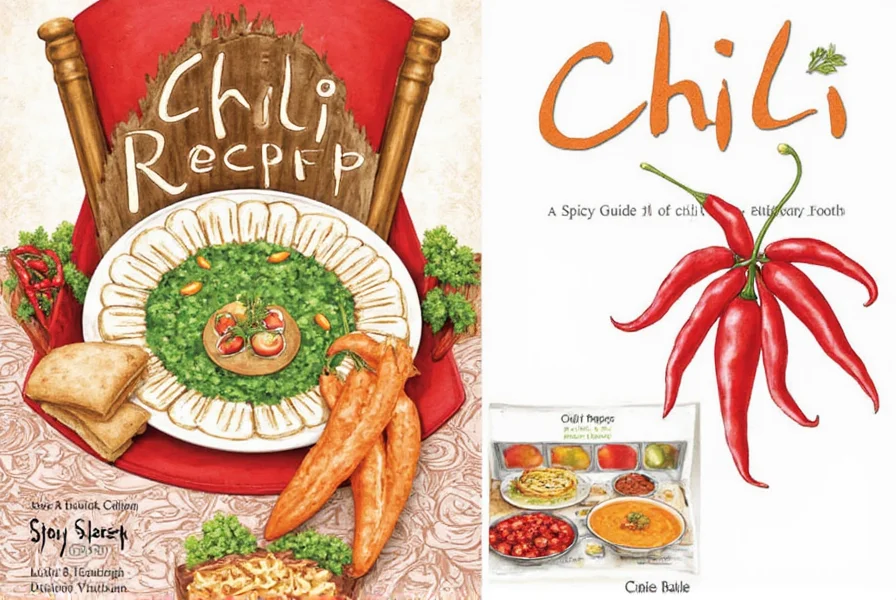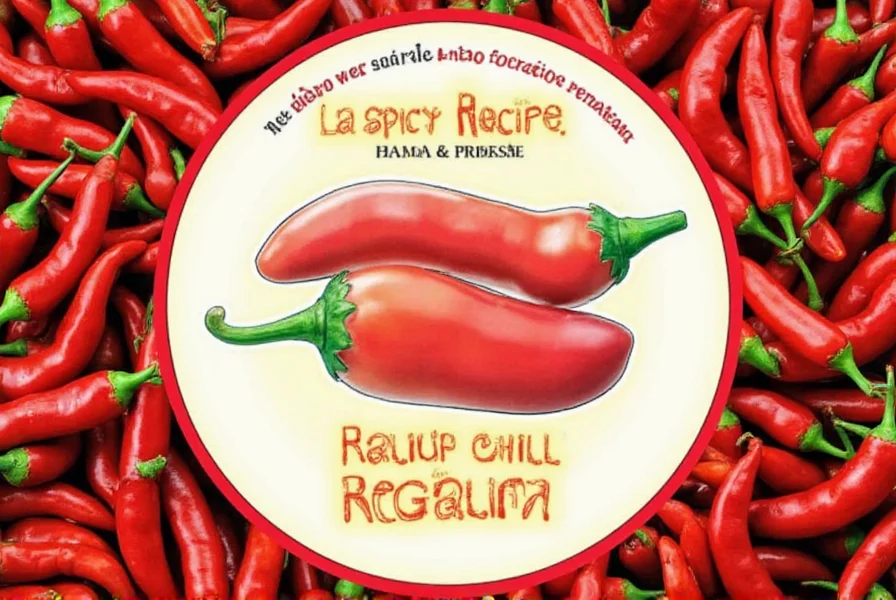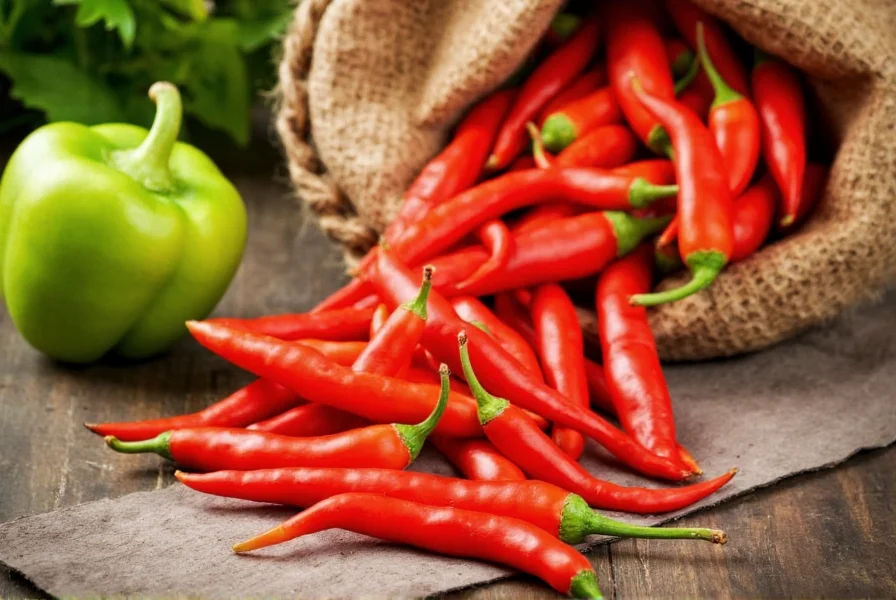Table of Contents
What Is a Chili Recipe? (And Why 'Recip' Is a Common Misspelling)
If you're searching for "chili recip," you're likely looking for chili recipes—the classic American comfort food dish made with meat, beans, tomatoes, and chili peppers. "Recip" is a common misspelling of "recipe" that often appears in search queries. This guide delivers exactly what you need: authentic, tested chili recipes that produce rich, flavorful results every time.
Unlike general cooking with chili peppers, a proper chili recipe refers specifically to the hearty stew-like dish that's been a staple at cookouts, game days, and family dinners for generations. The best chili recipes balance meaty richness, tomato acidity, bean texture, and just the right amount of heat from carefully selected chili peppers.

5 Best Chili Recipes You Need to Try
These professionally tested chili recipes deliver authentic flavors with clear instructions. Each includes precise measurements, cooking times, and pro tips for perfect results.
1. Classic Texas-Style Beef Chili (No Beans)
This authentic recipe honors Texas chili traditions with pure meat flavor and complex chili pepper depth. Simmer for 3 hours for maximum flavor development.
- Prep: 20 minutes
- Cook: 3 hours
- Servings: 6-8
| Ingredient | Measurement | Special Notes |
|---|---|---|
| Chuck roast, cubed | 2 lbs | Trim excess fat |
| Ancho chili powder | 3 tbsp | Toast before using |
| Guajillo chili, soaked | 4 dried | Essential for depth |
| Onion, finely diced | 1 large | Caramelized first |
| Garlic, minced | 4 cloves | Add after onions |
| Beef broth | 2 cups | Low sodium |

2. Vegetarian Three-Bean Chili
A hearty meatless option packed with protein and flavor. This version uses three types of beans for complex texture.
3. Cincinnati-Style Chili
Serve this uniquely spiced chili over spaghetti with shredded cheddar for the authentic Cincinnati experience.
4. White Chicken Chili
Using chicken breast and white beans creates a lighter but equally satisfying chili option with green chili heat.

5. Slow Cooker Smoky Bacon Chili
Perfect for busy days—just brown the meat, add ingredients to your slow cooker, and let it work its magic.
Key Ingredients for Perfect Chili Every Time
The difference between good chili and exceptional chili comes down to ingredient selection and preparation:
Meat Matters
Use 80/20 ground beef for optimal fat content, or cube chuck roast for more texture. For authentic Texas chili, skip the beans entirely.
Chili Peppers Decoded
Don't just grab random chili powder—understand what you're using:
| Chili Type | Best For Chili | Substitution Ratio |
|---|---|---|
| Ancho powder | Base flavor, mild heat | 3 parts to 1 part cayenne |
| Chipotle powder | Smoky depth | 1-2 tsp per batch |
| Cayenne | Adjustable heat | 1/4-1/2 tsp to start |
| Dried guajillo | Professional depth | Soak 4 peppers, blend |
The Secret Ingredient Most Skip
A 1-ounce square of dark chocolate (70% cacao) added in the last 30 minutes creates remarkable depth without making it sweet. Trust us—this chef's trick transforms ordinary chili.
Chili Cooking Methods Compared
Choose the best technique for your schedule and equipment:
| Method | Time Required | Flavor Result | Best For |
|---|---|---|---|
| Stovetop | 2-3 hours | Richest flavor development | Weekend cooking |
| Slow Cooker | 6-8 hours | Convenient, tender meat | Busy days |
| Instant Pot | 45 minutes | Good flavor, faster | Weeknight meals |
| Oven | 2 hours | Even cooking, no stirring | Large batches |
Customize Your Chili: Heat Levels and Variations
Make chili work for any palate with these proven adjustments:
Controlling Heat Perfectly
- Mild: Use only ancho powder, omit fresh chilies
- Medium: Add 1 diced jalapeño with seeds removed
- Hot: Include 1-2 minced serranos or 1/4 tsp cayenne
- Extreme: Add habanero or ghost pepper (use gloves!)
Popular Regional Variations
Texas Style: Just meat, chilies, and spices—no beans or tomatoes
Cincinnati Style: Spiced with cinnamon and allspice, served over spaghetti
New Mexico Style: Features green chilies as the star ingredient
Storing and Reheating Chili Properly
Chili tastes even better the next day! Follow these storage guidelines:
- Refrigeration: Store in airtight container for up to 4 days
- Freezing: Portion into freezer bags (lay flat) for up to 6 months
- Reheating: Gently warm on stove with splash of broth (not microwave)
- Flavor Boost: Add fresh cilantro and lime juice after reheating

Chili Recipe FAQs
Why do people search for 'chili recip' instead of 'chili recipe'?
'Recip' is a common misspelling of 'recipe' that frequently appears in search queries. This typically happens because 'recipe' is pronounced 'res-uh-pee' which sounds like 'recip.' When users type what they hear, they often misspell it as 'recip.'
What's the secret to thickening chili without making it gloppy?
The professional technique is to create a 'beurre manié'—mix equal parts soft butter and flour, then whisk small amounts into simmering chili until desired thickness. Alternatively, mash some beans against the pot wall or let it simmer uncovered for the last 30 minutes to reduce naturally.
How can I make chili healthier without sacrificing flavor?
Use lean ground turkey instead of beef, add extra vegetables like zucchini and bell peppers, and reduce sodium by using no-salt-added tomatoes. For maximum nutrition, include three different bean varieties and top with fresh avocado instead of cheese.
What's the difference between chili powder and chili seasoning?
Chili powder is pure ground dried chilies, while chili seasoning contains additional spices like cumin, garlic powder, and oregano. For authentic chili, use pure ancho chili powder and add your own spices for better control of flavors.
Why does my chili taste bitter and how can I fix it?
Bitterness usually comes from overcooked tomatoes or burnt spices. Fix it by adding 1 tsp of honey or maple syrup, a splash of vinegar for balance, or a small piece of dark chocolate. Next time, toast spices briefly before adding liquids and use quality canned tomatoes.
Mastering the perfect chili recipe takes practice, but these professional techniques guarantee restaurant-quality results at home. The key is understanding that 'chili recip' searches almost always mean people want authentic chili recipes—the hearty stew dish—not general cooking with chili peppers. Focus on building deep flavor through proper spice toasting, meat browning, and simmering time for chili that impresses every time.

Whether you're cooking for game day, a family dinner, or meal prepping for the week, these chili recipes deliver consistent, crowd-pleasing results. Remember that the best chili evolves—taste and adjust seasoning throughout cooking, and don't be afraid to experiment with your favorite flavor combinations.










 浙公网安备
33010002000092号
浙公网安备
33010002000092号 浙B2-20120091-4
浙B2-20120091-4